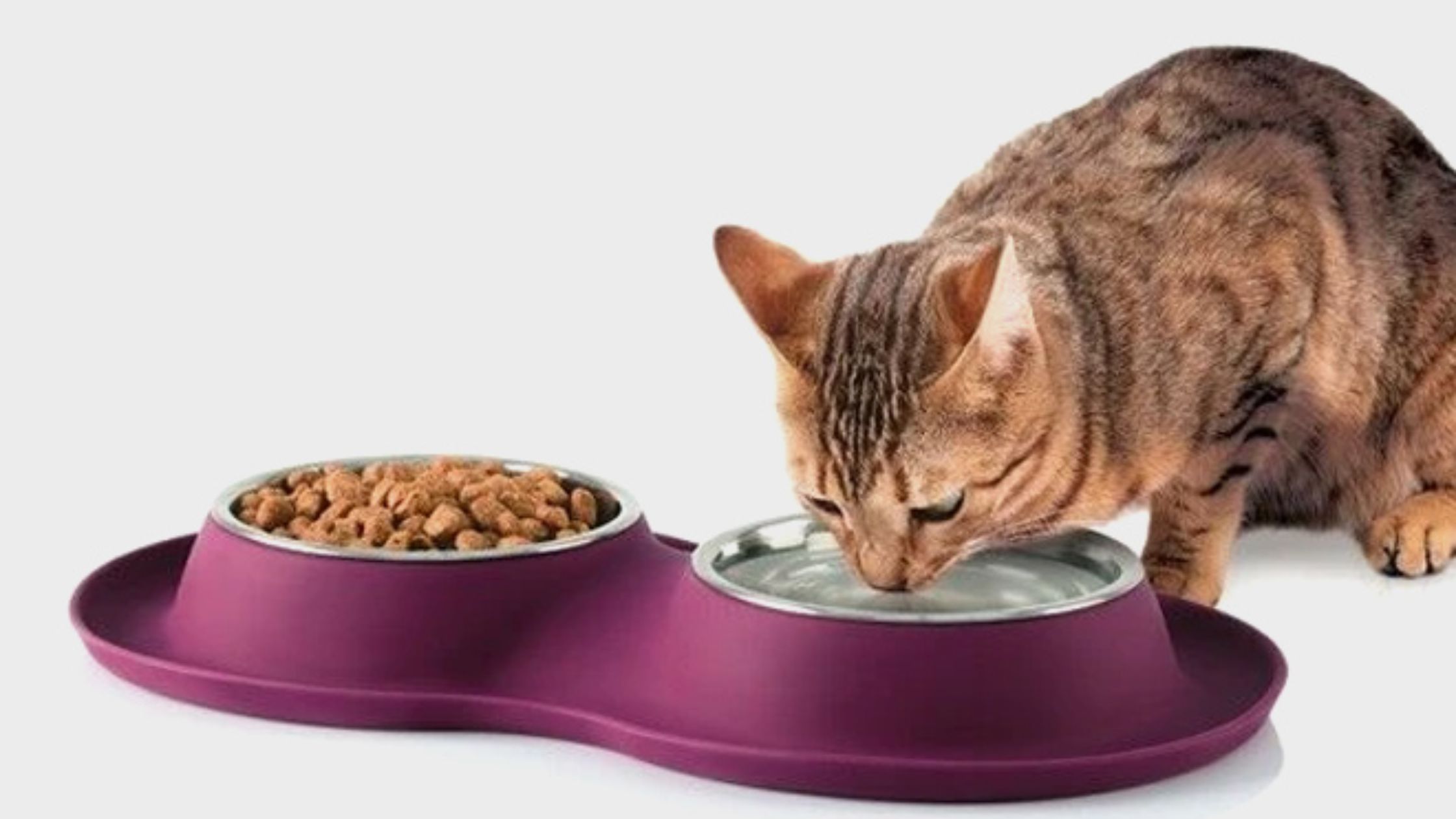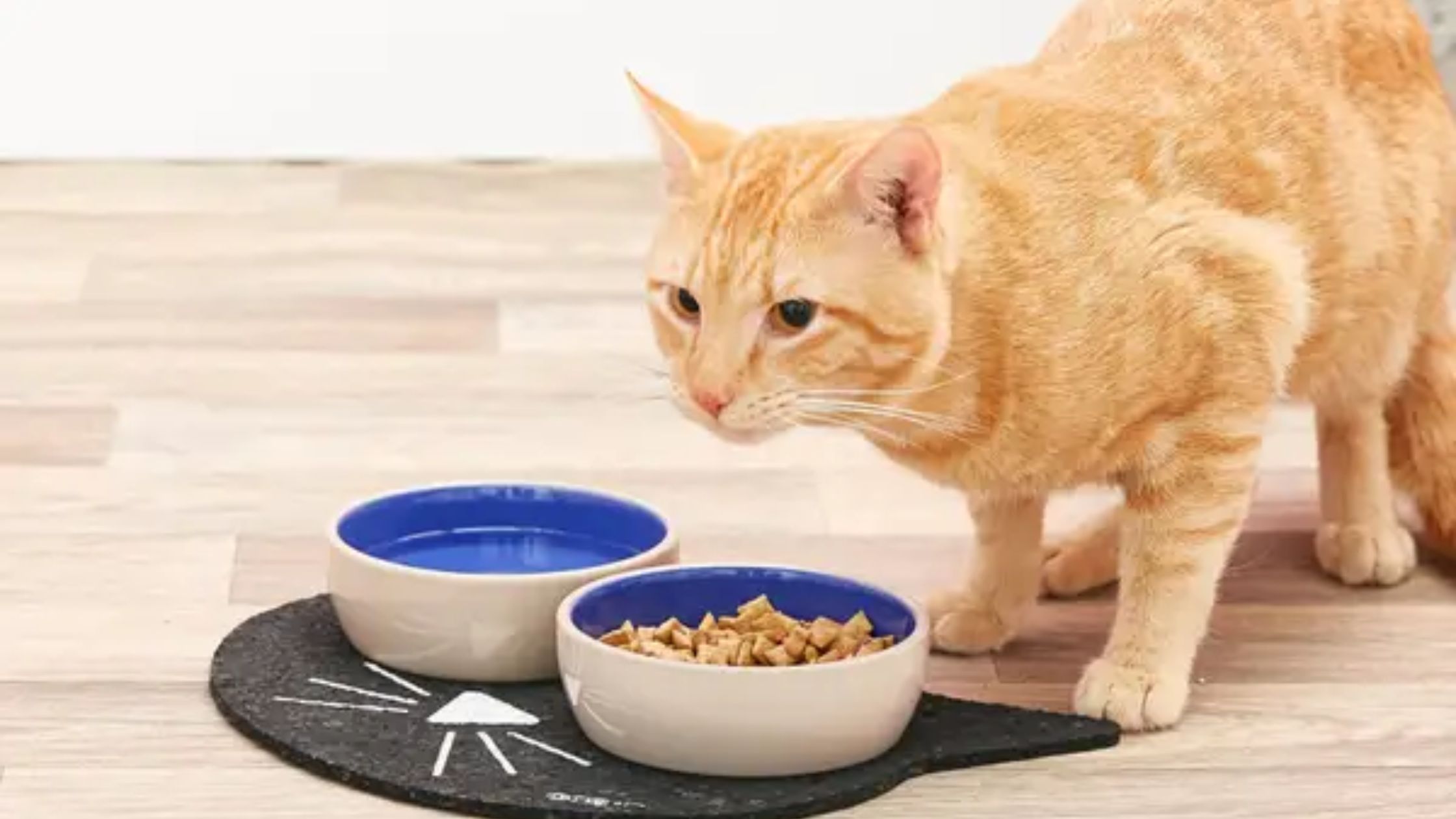Keeping your cat’s food and water bowls apart is more than a neat setup. It taps into feline instincts, promotes hydration, and prevents health issues. Discover science-backed reasons, practical layouts, and how a wireless cat water fountain can elevate your cat’s hydration game.
Evolutionary Roots of Separate Feeding
Cats’ feeding preferences trace back to wild ancestors navigating prey and water in nature. Mimicking this separation aligns with ingrained behaviors.
Instinctual Avoidance of Contamination
In the wild, cats hunt prey laden with blood and bacteria. Drinking water from the same spot risked ingesting pathogens. Separating food and water bowls today prevents cross-contamination, encouraging cats to sip fresh water rather than avoid it.
Wildcat Prey and Water Sources
Wildcats sought water sources away from feeding grounds to evade predators drawn by scent. Housecats retain this instinct, often refusing water near their food. Placing bowls several feet apart echoes the safe distances their ancestors relied on.
Health Benefits of Bowl Separation
Proper bowl placement goes beyond behavior. It directly supports digestive efficiency and urinary tract health.
Preventing Bacterial Overgrowth
Food residues introduce bacteria into water. Studies show that water bowls adjacent to food harbor up to four times more bacterial colonies than bowls kept separate. Clean water reduces risk of gastrointestinal upset and urinary infections.
Encouraging Hydration and Kidney Health
Cats naturally have low thirst drives and evolved to extract moisture from prey. Modern dry diets demand supplemental hydration. Separating the water bowl creates a dedicated, appealing station, helping maintain optimal kidney function and reducing risk of urinary crystals.
| Benefit | Mixed Bowls | Separate Bowls |
| Bacterial Count | High | Low |
| Average Daily Water Intake | 40–50 mL per kg | 60–70 mL per kg |
| Urinary Tract Issue Incidence | 18% | 8% |
Practical Setup Strategies
Creating a functional feeding zone means selecting the right materials, positions, and accessories.
Optimizing Bowl Materials and Locations
Ceramic or stainless steel bowls resist bacterial buildup better than plastic. Place the food bowl on a stable mat in a low-traffic corner to reduce spills. Position the water bowl across the room, ideally near a quiet window or away from litter areas to invite frequent sips. For more on avoiding odor and hygiene pitfalls, check our guide to the best and worst places to keep a litter box.
Elevation and Stability
Raised feeders support cats with arthritis or neck strain, improving digestive ease. Anti-skid pads and weighted bowls prevent tipping. For water stations, choose wide, shallow designs to keep whiskers comfortable and water visible.
Enhancing Water Appeal with a Wireless Cat Water Fountain
For particularly finicky drinkers, a wireless cat water fountain offers continuous, fresh water without cord clutter.
How Flowing Water Mimics Natural Sources
Running water attracts cats via movement and sound. Fountains maintain oxygenation and cleanliness, tapping into that instinctual preference. Motion-activated sensors engage only when your cat nears, conserving battery life.
Battery Life and Placement Tips
Most wireless cat water fountains run 4–8 weeks on a single charge. Look for rechargeable models with 4,000mAh or higher batteries. Place fountains on a level surface away from feeding stations and heat sources. Clean filters monthly to sustain flow and purity.
| Model | Tank Capacity | Battery Life | Flow Modes |
| DownyPaws Wireless Fountain | 60 oz | Up to 30 days | Motion & Timer |
| PETLIBRO Cordless Fountain | 84 oz | Up to 40 days | Continuous & Auto |
| PawPoll Stainless Steel Model | 108 oz | Up to 60 days | Three Speeds |
Addressing Common Hydration Hurdles
Even with separate bowls and fountains, some cats still resist drinking. Identifying obstacles helps you adapt.
Why Won’t My Cat Drink Water?
Surveyed owners report cats avoid bowls near noisy appliances or litter trays. Unpleasant odors or sounds can deter sipping. Relocation to a quieter zone, paired with fresh bowls, often reignites interest.
How to Get Cat to Drink More Water
- Rotate water stations to new spots every few days.
- Introduce flavoured ice cubes (tuna juice or low-sodium broth).
- Add water to wet food gradually.
- Offer multiple drinking styles: fountain, bowl, and drip from a faucet.
Combine these tactics with consistent schedules to build a reliable hydration habit.
Cat Feeding Tips for Balanced Nutrition
Well-hydrated cats are more receptive to meals. Balanced feeding supports overall wellness.
Wet vs. Dry Food Balance
Wet food contains up to 80% moisture, directly boosting hydration. Mixing wet and dry rations supports dental health and water intake. Transition gradually to avoid digestive upset.
Scheduled Feeding Routines
Cats excel with routines. Set fixed meal times away from water stations. This clarity helps cats associate the right spots for eating and drinking, minimizing confusion and territorial marking.
Long-Term Maintenance and Monitoring
Ongoing care ensures bowl separation remains effective and hygienic.
Cleaning Schedules
- Wash bowls daily with hot water (skip harsh detergents).
- Sanitize wireless fountain parts weekly.
- Replace filters and bowls every 6–12 months.
Regular maintenance prevents slime build-up and keeps bacteria levels low.
Bowl Replacement Intervals
Ceramic bowls chip over time; replace them when edges crack. Stainless steel may dent; inspect for rust spots. Fresh bowls signal a clean, enticing environment to your cat.
Conclusion
Separating your cat’s food and water bowls honors ancestral instincts, maximizes hydration, and safeguards health. Elevate your setup with quality bowls, strategic placement, and a wireless cat water fountain for fresh, flowing water that invites drinking. For personalized in-home guidance and pet care services, visit Gotham City Cat Care.
Frequently Asked Questions (FAQs)
1. Can I use plastic bowls if I clean them daily?
Plastic scratches harbor bacteria and retain odors. Ceramic or stainless steel remain safer long-term.
2. How far apart should I place the bowls?
Aim for at least 3–5 feet, or in completely separate rooms to mimic natural separation.
3. Are self-cleaning fountains worth it?
They cut manual scooping but still require weekly filter and pump cleaning to avoid mold.
4. My cat drinks from the tap instead. What now?
Redirect with a motion-activated wireless cat water fountain. Running water mimics taps without waste.
5. Will multiple bowls confuse my cat?
No. Cats adapt to multiple hydration points, especially if each station is consistently maintained.

